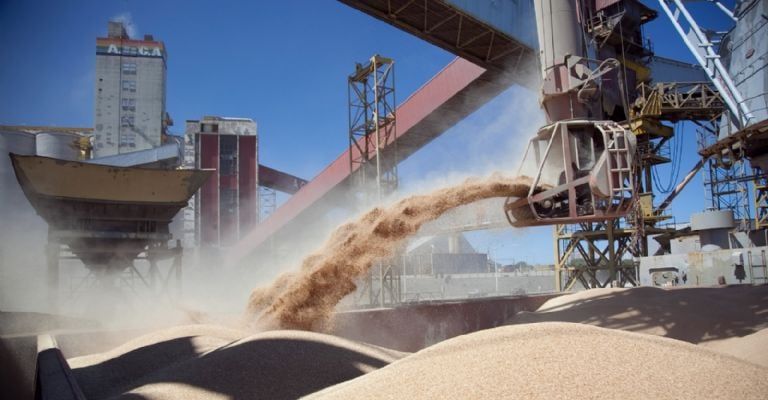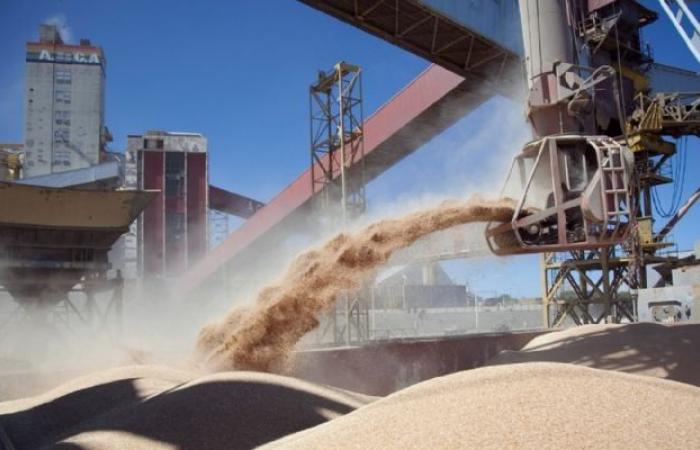The Government is concerned about the lower foreign exchange settlement by exporters, at a time that, a priori, would be the highest settlement of the year due to the large harvest that includes soy and corn, the two main crops of the country. There is a lot of talk about speculation in a market in which it is increasingly clear that a relative exchange rate is accumulating, but the combo is actually much more complex.
International prices on the decline, today at levels of 433 dollars per ton, a lower marketing rate than usual for this time of year and even a Government measure to improve the exchange rate, such as the “blend” exchange rate for exporters , which allows 20% to be settled in the cash market with liqui, results in lower currency settlement in the single exchange market, combining to outline a complex exchange panorama for the country.
The latest data from the Chamber of the Oil Industry and the Cereal Exporters Center (CIARA-CEC), in the first five months of the year the main agroindustrial exporters liquidated 9,046 million Dollars. This represents the lowest amount settled since 2020 for the January-May period.
In this combo the scenario for the Government is complex. The thing is that, in very crude terms, in the coffers of the central bank enters in the second trimester and part of the third the largest number of Dollarsprecisely due to the liquidation of the thick harvest, but those Dollars They are those that are used to supply the different industrial sectors and pay debt in the second half of the year, when although there is liquidation of exports of wheat, barley, meat, etc., but to a much smaller magnitude than in the case of corn and soy.
Late exchange rate?
In recent weeks, the idea that the official exchange rate is behind schedule has been strongly established. This arose from last December, after the assumption of the new government and the management of Luis Caputo in Economy, it depreciated monthly at a rate of 2% (crawling peg), feeding the idea that inflation in that period was much higher than the devaluation of the peso.
That is why the idea began to mature in the market that at some point there could be a new exchange rate jump, something that the Government took it upon itself, time and again, to deny.
However, the marketing of soy and corn is around 40%, according to sector sources. }
“In the first week of June of this year, we found internal marketing that almost doubled in tons in the case of soy. Furthermore, the volume traded of soy is 3% above the average of the last five years.”
But as always, the equation to look at is PxQ, that is, prices per quantities. And prices are now low, compared to previous years, so there are many term contracts, especially in soy, which do not have fixed prices. In the market they estimate that of the total sold, only 32% of the production has fixed prices.
Price issue
“As of June 5, the remainder of soy unsold in the domestic market would be around 26.7 million tons. If we add the merchandise that was sold but the price has not yet been set (9 Mt), there would be about 35.7 Mt left to set a price in this campaign,” says a report from the Rosario Stock Exchange.

In the case of corn, the situation is similar, with the aggravating factor that it is caused by the Spiroplasma pest, commonly known as “leafhopper”, with losses in the current campaign exceeding US$ 2,500 million.
From the Rosario Stock Exchange they highlight that “the advance of corn purchases as a percentage of the total supply is trending towards normal levels.” They also point out that purchases of yellow grain total 43% of the total supply, 13 percentage points above last year, but 2 percentage points below the average of the last five years.
“In this campaign, similar levels of merchandise sold without a price have been maintained as a percentage of production. In this sense, 35% of the corn sold still does not have a price, a value similar to the previous campaign but much higher than the 20% average of the last five years”.




